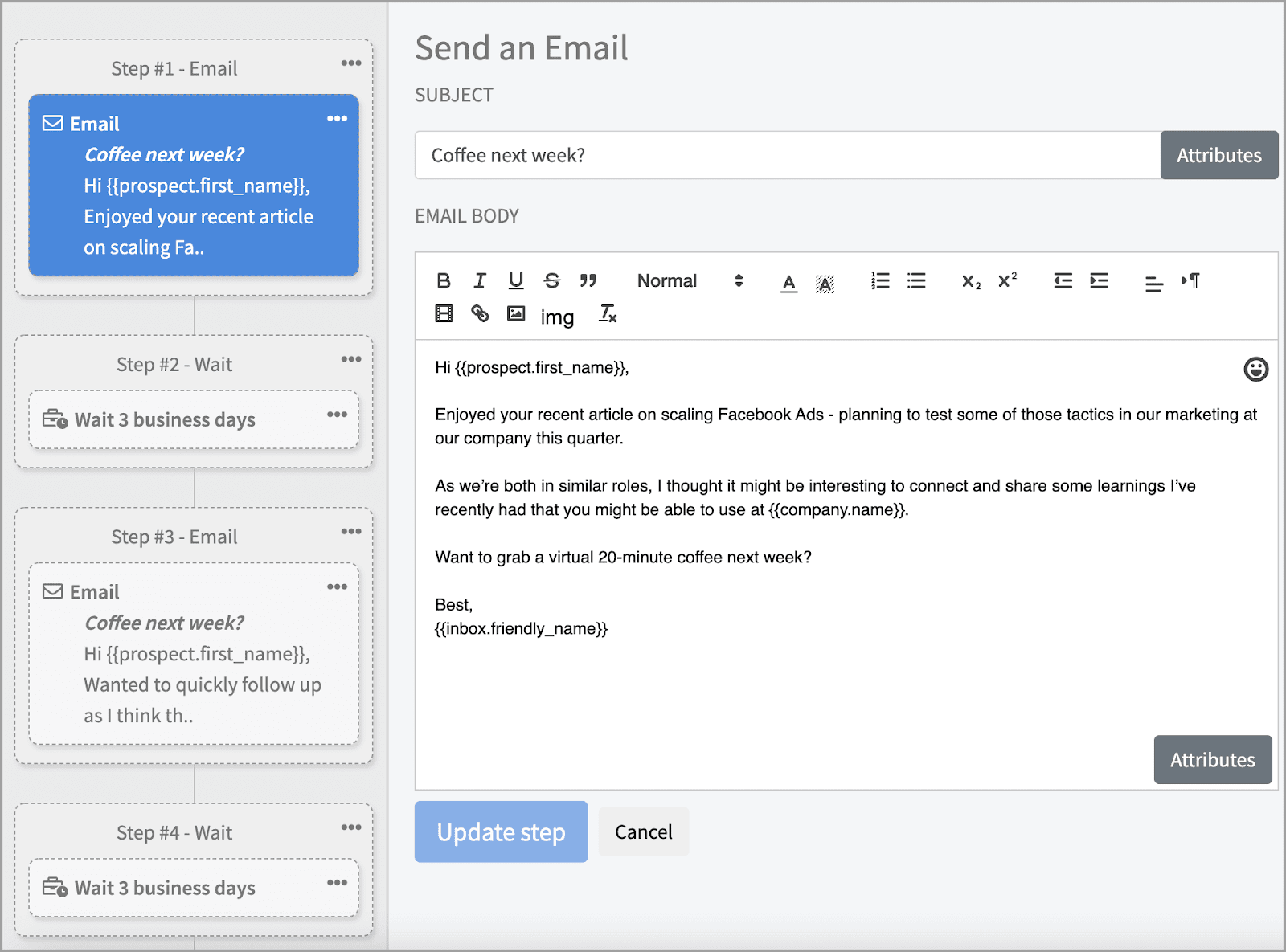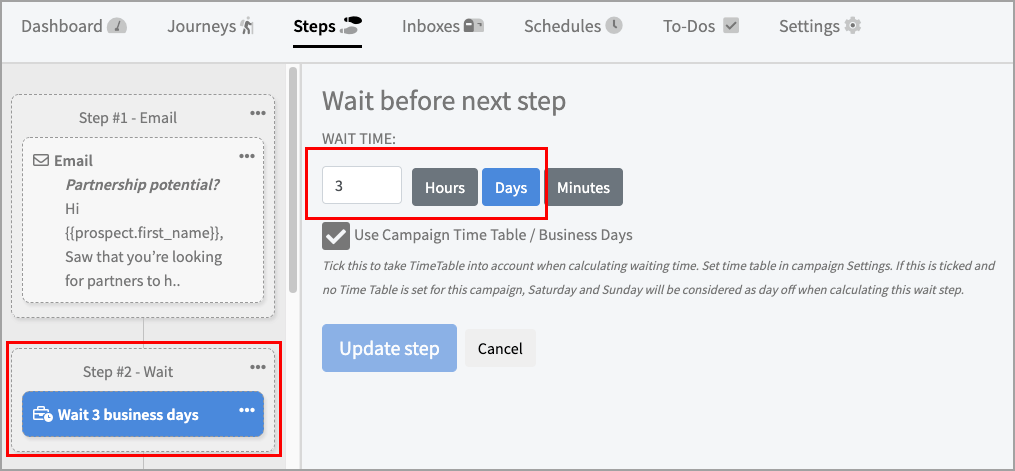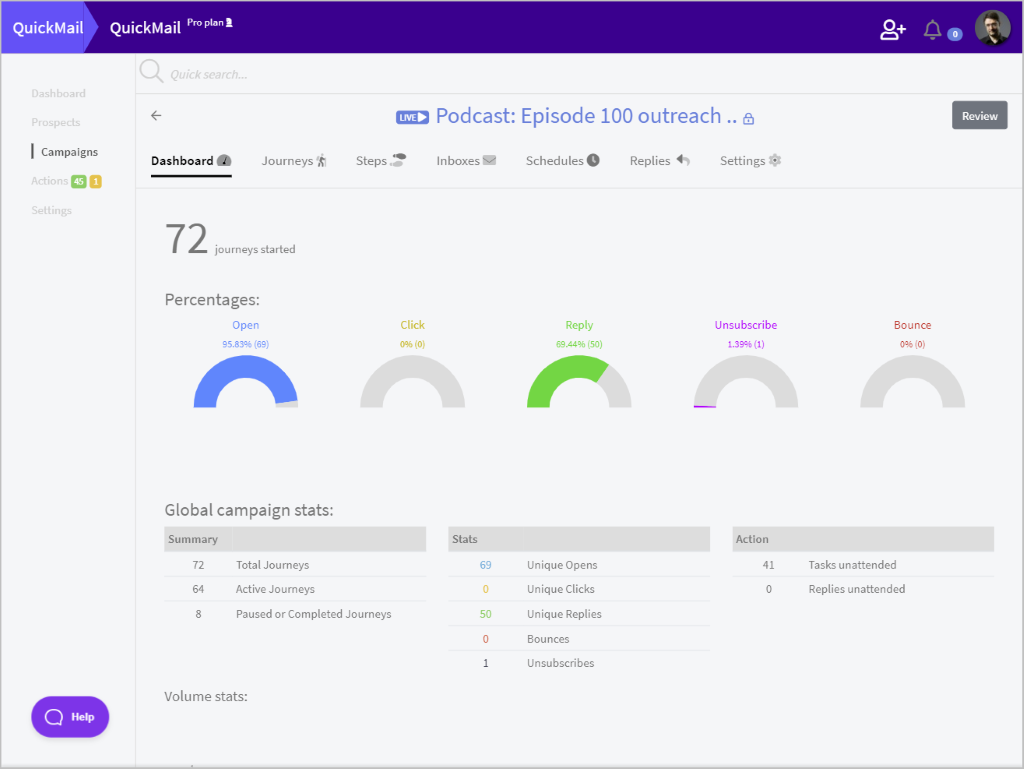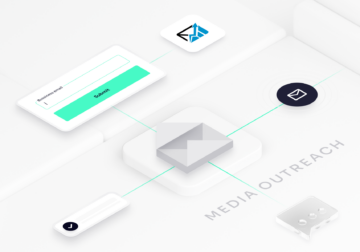Media outreach is a powerful way to get featured on sites where people matching your ideal customer profile spend their time.
You can generate awareness, traffic, and media mentions for your brand, or for brands you work with.
Let’s dive in.
What is a media outreach strategy?
A media outreach strategy refers to the process of:
- Identifying feature and ad placement opportunities for your brand
- Building relationships with relevant content creators, ad managers, or publishers who can offer you brand advertising opportunities
- Crafting your media outreach pitches
- Sending outreach to start conversations with your target audience
- Continuing the conversation to land advertising placements for your brand that generate awareness, traffic, and conversions
In short, it’s everything you need to do in order to generate awareness for your brand in publications that your ideal audience is reading or watching.
In the next sections, we’ll look at how you can bring all of these steps and processes together to craft a cohesive media outreach strategy.
Step-by-step: how to execute your performance-driven media outreach strategy
1. Set goals for your outreach
Like with any other marketing strategy, you’ll need to set clear objectives and KPIs.
This gives your team direction and will help you plan the tasks involved in your overall strategy.
Suppose your goal is to get ten ad placements on notable publisher websites.
With that goal in mind, you’ll set a target to reach out to 200 partnership or advertising managers. If 10-20% of those are interested in your offer, you’ll likely land ten placements and hit your main objective.
Your team can then use that information to plan how long they need to spend on different tasks in the overall process.
At this stage, also consider the types of media you want to land placements on.
Considering 70% of your customers start their buying journey outside of the mainstream search engines, it’s vital to use different types of media to hit your brand’s goals.
For example, you might want to secure programmatic advertising placements on a popular content-based website, or, use contextual advertising to access new audiences already interested in a solution like yours on sites that your future customers are using as a resource on their buying journey.
You can then create multiple segments in your campaign and compare them against each other once you start generating results.
2. Build a contact list and source their contact details
Once your goals are laid out, it’s time to build a list of people to contact in your media outreach strategy.
First, you’ll need to develop guidelines for the profile of your ideal recipients.
This will guide your prospecting efforts and help ensure you’re spending time talking to the right people. An example of criteria you could use to narrow your efforts would be:
- Job title: Ad Manager, Head of Partnerships, Head of Content
- Based in: Any major city in the US or Canada
- Company size: 30+ employees
- Traffic to publication: Above 10,000 visits per month from a specific audience
This also ensures that every site you reach isn’t in conflict with your brand.
For example, if you work at a performance agency and a brand you work with has specific guidelines for its audience, you can’t risk breaching these guidelines.
As part of this process, you’ll also need to consider whether or not the website you’re contacting offers cookieless tracking so your audience data isn’t being collected by third parties. Platforms like Zeropark help with this – partners have complete control over where their brand is featured.
You can use these criteria to narrow down your search and find qualified prospects more easily.
One of the best ways to identify people matching your criteria is with LinkedIn Sales Navigator. It gives you powerful search filters that you can use to quickly identify people matching your ideal prospect.
Most professionals keep their details up-to-date on the platform, and it has the added benefit of letting you connect and message people on it as well.
Once you have a list of contacts saved, you’ll need to use a B2B data tool like Anymail Finder, FindThatLead, or UpLead to source their email addresses.
Finally, you’ll need to verify their email address. This ensures that you’re reaching out to valid addresses and your emails won’t bounce straight back once you hit send. It’s also going to improve your email domain’s overall deliverability.
Another strategy you can use to streamline this process is to use a platform like Zeropark. It’s made for performance marketers and can help you identify audiences who are already engaged and on a customer journey. You can tap into these audiences, and based on the level of purchase intent they’re showing, decide if you want to target them in your next campaign or not.
3. Write your media outreach templates
Your email templates can make or break a media outreach campaign.
If your email resonates with your recipients, they’ll be happy to reply and consider working with you. If not, your emails won’t get a response and you’ll be left wondering what went wrong.
To help you ensure the best chance of a response, follow these best practices:
- Keep your email simple: Don’t use a fancy visual template, include images and videos, or buttons to encourage someone to click through. The more it looks like you’ve sent a personal email, the better.
- Always add personalization: Your recipients receive hundreds of partnership pitches every week. To stand out, make sure you add unique personalization to every email. Whether it’s using their first name rather than a “Hi there”, or opening your email with a compliment about a recent content piece they published, it’s critical that you customize each email.
- Add social proof: To build trust with a cold recipient, you can bring in social proof. This can be in the form of customer reviews, examples of previous ad campaigns you’ve run on other sites, or name-dropping other brands you’ve collaborated with. Adding this shows your recipient that you’re a real person and that it’s worth their time to get back to you.
- A call-to-action: Your first email is there to start a conversation. Make sure to use a simple call-to-action (CTA) – this ensures that it’s easy for your recipient to reply. You can even keep it as simple as “Does that sound interesting?”. If your recipient thinks there’s a potential fit, they’ll be happy to reply and you can continue the conversation from there.
- Focus on value for your recipient: A common mistake people make with media outreach is making the email all about themselves. You need to switch up your approach and focus on the value you can add to your recipient. For example, are your ads proven to generate conversions? Is the content highly relevant to the audience already on a website? Will offer something in return for the media placement? If you can quickly frame the benefits for your recipient, they’ll be far more likely to reply.
Combining these best practices into your media outreach templates will give you the best chance of seeing results from your emails.
4. Use cold email software to automate your outreach
When your email templates are ready and you know who you want to reach out to, it’s time to start scheduling your emails.
First, you’ll need to warm up your email address. This process will show email service providers (ESPs) that they can trust you, and fewer of your emails will get caught in the spam filter. There are various free and paid email warm-up tools available, and most work with Gmail and Outlook inboxes. It’ll take around 1-2 weeks for your inbox to be warmed up and ready.
Next, you can use a sales engagement platform like QuickMail to schedule your campaigns.
The major benefits of using platforms like these to send your campaigns are:
- You can personalize every email you send even when sending emails to multiple recipients at once
- You can build a multi-step campaign and see a clear overview of each step before sending
- You can schedule automatic follow-up emails if someone doesn’t reply
- You can track all of your key metrics and results

In short, using a third-party tool will save you hours of manual emailing every week.
5. Add follow-up steps to your campaign
After analyzing over 1.5 million emails sent using QuickMail, we found that 55% of replies to email campaigns come from a follow-up step.
It’s essential that you add at least one follow-up email to your campaign.
The reason for this is that your recipients are busy. If they receive your first email before a meeting or while they’re focused on another task, they’ll miss it. A follow-up email gives you a second chance at having them notice your email.
The process of adding follow-ups to your media outreach campaign is simple: in your outreach software, you need to add a delay step, then write your next email. A delay of three to five days is usually enough.

Next, you’ll write your follow-up email template.
An effective reminder email will do these things:
- Re-iterate the reason you’re reaching out
- Be concise and avoid wasting time
- Test a new call-to-action that’s an either higher or lower commitment
If someone doesn’t reply after you send a follow-up, you could even consider using a channel like LinkedIn messaging to connect with your recipient.
As long as you’re polite, no one will mind if you follow up, and it’s an excellent way to generate more replies.
6. Tracking your media outreach campaign results
It won’t be long before you’re getting replies to your campaigns and are regularly securing new brand placements.
Just like with your ad campaigns, you need to track your metrics.
This helps you understand if the activity is worth your time compared to other customer acquisition initiatives.
Here are some key metrics to track in your media outreach:
- Email reply rate: This gives you an indication of how good your email templates and value proposition are. Aim for a 15-20% reply rate. You can track this directly in your cold email software.
- A number of new media placements: This will show you how successful your overall campaign is based on your number of new media placements. Whether it’s a programmatic ad that shows in content, a search marketplace ad, or even sponsored post on social media, you’ll be able to report back to your team and let them know exactly what results were generated.
- Cost per click: This metric helps you understand how much you spent for every person who clicked your ad. It varies by industry.
- Traffic gained per feature: This gives you more insight into whether or not the placements you got were successful from a traffic perspective.

The better you know your metrics, the easier it will be to make a case for (or against) running more media outreach campaigns in the future.
Wrapping up
Media outreach can be a highly effective way to generate links, traffic, and overall brand awareness. To get the results you want, you need to map out your strategy. That includes planning out your goals and KPIs, identifying the right people to contact, all the way to organizing the key value propositions to include in your email template in order to generate replies.
If you can tie everything together, you’ll be able to consistently produce results from your media outreach and use it as a lever to grow your brand.

Łukasz Pośpiech


